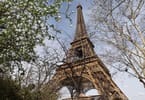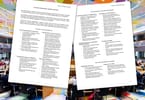If you’re considering surgery and a vacation this year, you may want to combine the two.
Medical tourism is booming, thanks to the massive savings that can be had if you’re willing to trust in foreign doctors.
In India, angioplasties go for around US$11,000, one-ninth the going rate in the United States.
The facelift that rings in at around US$12,000 in the United Kingdom can be had for US$1,800 in Brazil.
These are the benefits medical tourists are increasingly discovering, a result of the growing awareness that no one country has a monopoly on health care and that cheap doesn’t necessarily mean poor quality.
“Medical tourism has grown significantly in the last 10 to 15 years, especially in the developing world,” says Harvard law professor Glenn Cohen, author of “Patients with Passports: Medical Tourism, Law, and Ethics” and “The Globalization of Health Care.”
“The revenues generated by this trade are staggering.”
Prema Svjetskom vijeću za putovanja i turizam (WTTC), medical tourism contributed 9 percent of global GDP (more than US$6 trillion) and accounted for 255 million jobs in 2011.
Now, even small countries such as Mauritius and Jamaica want to get involved.
After JAMPRO, Jamaica’s investment and promotion agency, concluded that the average medical tourist spends US$5,000, double the amount of a vacationing tourist, a commission was established to investigate the building of offshore medical facilities and recruitment of U.S. doctors for month-long stints.
For the medical consumer, the benefits are clear.
Cost savings of up to 90 percent. Fast service. And, for some, a rare opportunity to receive experimental medical care that might not be available in their own country.
When life kicks, kick back
Amy Scher, 33, couldn’t find anyone in the United States to conduct the stem cell treatment she needed to treat her Lyme’s disease, which caused nerve and muscle damage, brain lesions and near-constant pain.
Despite the advice of her American doctor (“He thought it would kill me”) and her own reservations (“The game of tug of war with myself began the moment I hung up the phone with the doctor in India”), she took three trips to New Delhi between 2007 and 2010 to receive a controversial and experimental embryonic stem cell therapy program.
Today, she says she’s completely healed of all effects of the autoimmune illness and works as an energy therapist in San Francisco.
“Western medicine failed me,” she says in, “This is How I Save My Life: A True Story of Embryonic Stem Cells, Indian Adventures, and Ultimate Self-Healing,” an “Eat Pray Love”-style memoir that debuted in January.
“I agreed to be a guinea pig, because it offered the most potential for regeneration. It was my best shot at saving my life,” says Scher.
She also fell in love with New Delhi.
“It offered exactly what my life needed. It offered hope,” she says.
And in the process, she saved US$60,000.
A stem cell treatment program at Northwestern Memorial in Chicago can cost US$90,000.
Because it required immunosuppressant drugs, “physicians told me I’d not likely survive the drugs even in the unlikely chance I were approved.”
In India the program cost Scher US$30,000 and “it included room and board.”
“Other countries are astounded at our medical costs,” she says. “Brain scans that are US$250 in India are US$1,500 in the states.
“Lab work, easily US$50-plus in the states, cost only US$5-10 there. And don’t get me started on affordable medication. I brought a whole suitcase back.”
But it’s not just the cost, she says.
The service is efficient and the labs and pharmacies often delivered results and medication to her hospital room for free.
Queues, what queues?
Perhaps the most appealing perk is the lack of waiting lists.
In Britain and Canada, hip replacement waiting lists stretch to a year, while at Bangalore’s Apollo Hospitals, patients can land in the operating room the morning after getting off a plane.
In 2010, Brit Angela Chouaib, 36, had gastric bypass surgery. She lost 140 pounds and was put on a three-year wait list for the surgery to tidy up the excess skin.
She decided to take the matter into her own hands.
She researched alternatives for the surgery that was going to cost nearly US$32,000 in the United Kingdom and found a doctor in Poland who could do it for less than US$8,000.
“I was trapped in a deflated fat suit and didn’t want to put my life on hold for another three years,” Chouaib says.
The surgery was a success.
“I felt like a new woman,” she says.
Chouaib started setting up similar trips for friends of friends because, “I wanted to help others feel as good as I do.”
After nine months and 50 success stories, Chouaib quit her job in London and in November 2010 started Secret Surgery LTD, organizing overseas cosmetic surgery, mostly to Poland.
In December 2012, she sent 30 women to Wroclaw, a girlfriends’ getaway that had some surgical procedures thrown in.
The women, between the ages of 19 and 60, enjoyed lavish dinners, escorted tours to a Christmas market, personal shopping with an image stylist and late-night chats that they’d started months earlier on Facebook.
Scottish mom Marie Ferguson took her two daughters for “a Christmas treat” after having a mini-facelift and liposuction in April.
“Being a medical tourist has enough to focus on without worrying how to get from A to B,” Chouaib says. “I arrange flights, transfers, luxury accommodations, surgery stay, procedure and the little things (grocery delivery and massage).”
Would you like a hotel room with that mastectomy?
Medical tourism is lucrative and sophisticated enough to support booking websites offering trips, pointers and rating systems.
The number of companies acting as medical travel agents is ballooning, marketing the idea that recuperation happens quicker in sunny climes.
By combining a little R&R with a rhinoplasty, so goes the thinking, you kill two goals with one trip.
To some, it might sound risky, but according to Nathan Cortez, associate professor at Southern Methodist University Law School, who researches medical tourism, “Hospitals that market to foreign patients go out of their way to make materials available in English and to employ English-speaking doctors and nurses.
“I encourage people to do their homework, understand whatever waivers or contracts they are asked to sign by foreign doctors and hospitals and visit credible hospitals, preferably those accredited by Joint Commission International (JCI) or another international hospital accreditation body.”
By the end of 2012, more than 350 international hospitals had been awarded JCI accreditation, most of which, along with their respective countries, are aggressively courting international patients.
Medical tourism around the world
Brazil
Brazil is top dog when it comes to cosmetic surgery, with more than 4,500 licensed cosmetic surgeons, the highest per capita in the world.
Newsstands in Rio and Sao Paulo sell magazines such as “Plastica & Beauty” next to “Marie Claire”; and Dr. Ivo Pitanguy, a popular plastic surgeon, is often honored at Carnival with samba dancers praising his “scalpel guided by heaven.”
Prices in Brazil are two-thirds the typical prices in the United States.
Alexander Edmonds, assistant professor of anthropology at the University of Amsterdam and author of “Pretty Modern: Beauty, Sex and Plastic Surgery in Brazil,” tells the story of a domestic servant who, after reading up on prosthetic materials at an Internet cafe, paid US$900 for a mid-cost model of breast implant. The same procedure averaged US$3,694 in the United States in 2011.
Tajland
Between 2010 and 2014, Thailand is expected to rake in US$8 billion in medical tourism dollars.
Bangkok’s Bumrungrad International Hospital, a gleaming 22-floor facility with more than 554 beds and 30 specialty centers, sees more than a million patients per year, 40 percent of which come from 190 foreign countries.
There’s a Starbuck’s off the lobby and a four-star hotel and shopping mall on the campus.
www.bumrungrad.com
Singapur
At last count, this island state of 5 million had 13 JCI-accredited hospitals, many of which are affiliated with well-known institutions.
Singapore Medicine, a government-industry partnership since 2003, promotes members to international tourists and requires compulsory posting of all costs associated with health care.
Singapore spends less than 4 percent of its GDP on health care. By 2019, health care in the United States is expected to consume 20 percent of GDP.
www.singaporemedicine.com
Indija
“Ahithi devo bhavha,” a Hindu phrase that means “the guest is God,” is the guiding principle of health care in India.
It’s also the only Sanskrit patients are likely to encounter here — English is the language of choice throughout the country’s extensive hospital system.
Surgery in India is often one-tenth the going rate in the United States.
A heart-valve replacement that runs around US$200,000 in the States goes for US$10,000-14,000 at Apollo Indraprastha in New Delhi.
Lasik Eye Surgery costing US$4,000 in the U.S. is available at Apollo Hospitals, Hyderabad for US$300.
www.apollohospitals.com
costa rica
In Costa Rica, dental care can cost as much as 70 percent less than in the United States. More than 40,000 medical tourists visited Costa Rica in 2011, a third for dental care.
The country that’s a short trip from the United States also offers orthopedics, cardiology, spine, cosmetic and bariatric surgery.
www.promedcostarica.com
Više resursa
For more information on medical tourism, check out HealthCare Tourism International, a nonprofit that tracks global healthcare and provides a database of services by country, (www.healthcaretrip.org) or Patients Beyond Borders, which works with international Ministries of Health and Ministries of Tourism to connect patients with providers.
www.patientsbeyondborders.com
ŠTA UZIMATI IZ OVOG ČLANKA:
- Despite the advice of her American doctor (“He thought it would kill me”) and her own reservations (“The game of tug of war with myself began the moment I hung up the phone with the doctor in India”), she took three trips to New Delhi between 2007 and 2010 to receive a controversial and experimental embryonic stem cell therapy program.
- After JAMPRO, Jamaica's investment and promotion agency, concluded that the average medical tourist spends US$5,000, double the amount of a vacationing tourist, a commission was established to investigate the building of offshore medical facilities and recruitment of U.
- In Britain and Canada, hip replacement waiting lists stretch to a year, while at Bangalore's Apollo Hospitals, patients can land in the operating room the morning after getting off a plane.






















